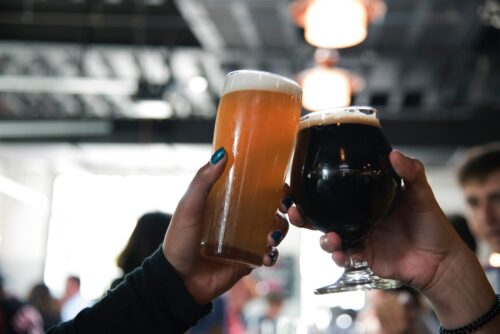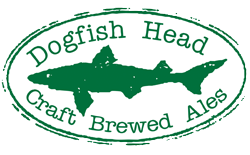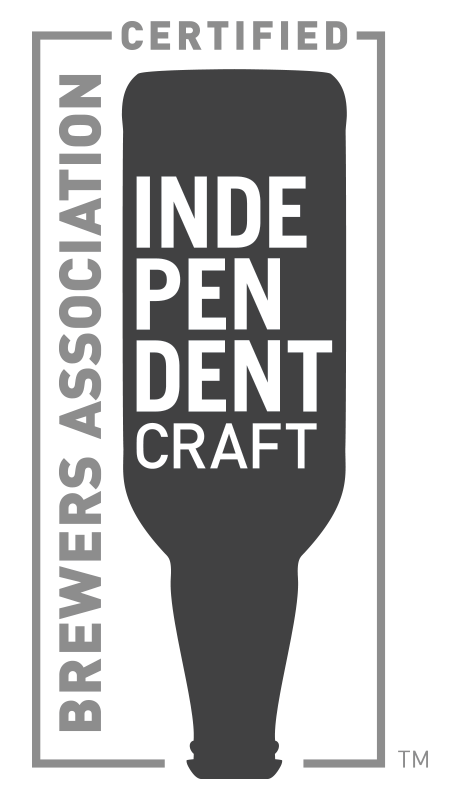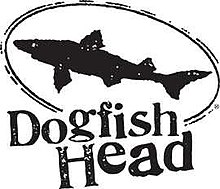The entire craft beverage community is talking about the news from last Thursday: Boston Beer acquired Dogfish Head in a deal valued at about $300 million. There’s a lot of speculation and side conversation – outsiders may never know the true reasoning behind it. Today we’ll discuss the marketing factors that may influence the decision to sell a craft beer business. Just a heads up, it’s a long read, but the team at Market Your Craft agreed that it is far too important a topic for glossing over.
the basics – understanding the merger
getting crafty – marketing the Dogfish story
behind-the-curtain – designing a high-performing brand
summary

While having a strong craft beer brand is vital in today’s crowded market, it doesn’t guarantee survival. This is neither a doomsday prediction nor a critique of Dogfish Head’s relative strength or weakness. It is, however, a wake-up call that no one in craft is immune to forces that are radically changing the selling environment daily. To achieve desired growth, your company will benefit from taking action now to build a relevant, sustainable brand story for current and future customers.
the basics behind the Dogfish Head sale
How did Sam Calagione, Co-Founder of Dogfish Head Craft Brewery (Dogfish) along with his wife Mariah, arrive at $300 million as a sale price? There are certainly stats that inform the decision, including:
- The value of the U.S. craft beer market is estimated at $27.6 billion (194M barrels).
- In 2018, Dogfish was 13 on the list of top U.S. beer companies by volume (approx. 300k barrels) and grew dollar sales 9.4%. They’ve not yet been in the top 10.
- Current distribution footprint is limited to 43 states and Washington, D.C.

What about Jim Koch, founder and Chairman of The Boston Beer Company (Boston Beer, NYSE: SAM), and CEO Dave Burwick? Negotiating behind closed doors was no doubt a battle of Harvard Business School economics versus the off-centered brand that family built:
- Overall, Boston Beer was flat last year, but enjoyed a 32% surge in net revenue to $251.7 million in Q1 2019, largely driven by hard seltzer and tea depletions (up 11% for the fourth consecutive quarter).
- Boston Beer’s flagship Sam Adams Boston Lager has struggled establishing a relevant brand for the past decade, with a rotating schedule of unproductive ad campaigns.
- The Dogfish brand is undoubtedly strong, having grown significantly since 1995, with styles that could be considered “complementary” to the current Boston Beer lineup.
Right now, there are no obvious [public] indicators on how they arrived at that number. And, like negotiating a price for your bright yellow, 300hp, 4-speed manual ’67 Chevrolet Corvette in perfect condition, it’s not always about what it’s worth to you, but how much you’re willing to take. There’s a great article recently posted by a team of public accountants in Pennsylvania in which they talk about the main factors that drive value for craft breweries:
- Cash flow: cash and cash-equivalents moving into and out of your business. Dogfish is capitalizing on the lower-calorie and “better-for-you” beer trend with Slightly Mighty, so perhaps they are shifting production from less-popular styles, improving their cash flow.
- Capacity: Dogfish has grown strategically over the years, despite a hiccup around 2011 (supply shortage causing them to pull out of 4 states). They returned to those markets in 2013 and have since built the production facilities necessary for their current 300k barrel projections. Efficiencies and expanded distribution available through Boston Beer improves their ability to scale inter/nationally.
- Human capital: from the outside, current and prior employees speak pretty highly of the company. With 400+ employees, they likely face challenges similar to many other family-run, small-to-mid-sized businesses driven by a strong personality (Sam). They definitely left the door open for a sale to a respected, larger brewer, around the time of the Boulevard Brewing sale in 2013, if their children chose not to participate in the business when they came of-age.
- Product: Boston Beer hasn’t created much news on the beer side, and the Sam Adams brand last posted growth in 2014. Their Sam ’76 is a lager-ale hybrid that clocks in at 4.7% ABV, 12 IBUs and 131 calories, and its introduction was met with mediocre review. Conversely, Dogfish has built their brand around innovation; Sam plans to sit on the Board at Boston Beer; and they bring experience with hard spirits to the table (which could help shape Boston Beer’s hard tea and seltzer businesses, or “beyond-beer” as Sam calls it).
LNK Partners, a 15% private equity stakeholder in Dogfish, was critically looking at these and other performance metrics from their seat at the negotiating table. They will certainly see their portion of the $173 million in cash under the terms of the transaction.
Undoubtedly, there are a lot of behind-the-scenes calculations that go into a deal of this magnitude. There could be just as many if not more personal factors at play here, including: retirement (Sam’s 49, we should all be so lucky), health (was not an apparent issue at CBC in Denver this year) or just the fact that he and Mariah are tired (they’ve been at this their entire married lives). So when Sam and Mariah were offered what they called “F-U” money in the past from venture capitalists and larger breweries, and they declined…what makes their relationship with Jim Koch different? They both are fiercely independent; both have served on the Board of the Brewers’ Association; and the two companies have collaborated on beer for events in the past. Sam calls Jim a “longtime friend-in-beer,” and none of us at Market Your Craft are really sure what that means. It sounds like a politically-correct label for public relations purposes, alongside the repetitive “together” messaging in press and company communications meant to emphasize the natural synergies between the two companies. Not being cynical, just trying to piece together what’s going on for ourselves and your company.
getting crafty with the Dogfish Head sale
What does all this talk about Dogfish Head and The Boston Beer Company have to do with your company? Simple: relevance in the craft beer space and designing a stand-out brand story. Asking the question, “why would Dogfish sell to Boston Beer?” forces us examine our own efforts under the microscope. And while a playbook for the $300 million sale isn’t obvious, there are trail markers and caution signs along the path that Dogfish took to get here.
The team at Market Your Craft believes innovations in non/alcoholic brands will continue to shape the beverage landscape, in step with growing preference for craft experiences and artisan products. Like others, we can only speculate on the business drivers that ultimately sealed the deal. However, careful review of Dogfish’s marketing strategy reveals how they built a strong, sustainable brand that ultimately aligned with Boston Beer’s vision for craft beer and beyond. And props to Mariah Calagione and more recently Neal Stewart (now VP of Marketing at Deschutes Brewery) for their work designing and investing in the brand experience along with the people and beer.
If Dogfish were to fill-in our TAP YOUR BRAND VIBE template – the same one we use to help guide craft beer clients to create a strong brand story – here’s what it might look like1:
Most owners and executives find that they have to act instinctively – to trust their gut – because they don’t have the time or mindspace to prioritize everything. However, taking the time now to align your team internally on what you stand for helps everyone represent the brand consistently and authentically to customers so you can continue to grow. Exactly what Neal said happened with the team at Dogfish Head.
Here is the TAP YOUR BRAND VIBE template for you and your team. If you run into a snag or want to talk it out, we’re always happy to help!
behind-the-curtain with the Dogfish Head sale
While few craft beer players will find themselves in a selling scenario similar to Dogfish Head, most have the opportunity to thoughtfully and strategically scale their business. Fundamental to growth is establishing a high-performance marketing discipline internally. With on-site workshops, video tutorials and a suite of marketing and engagement services, the team at Market Your Craft empowers do-it-yourselfers to stand out from the crowd and tell their unique story to new customers eager to discover and share.
 | WRITE AN IMPACTFUL BRAND STORY Customers purchase from businesses they believe in. Show you stand for something with a strong mission, vision, product and brand story. |
 | KNOW HOW TO TALK WITH CUSTOMERS Whenever you’re in front of the customer, cut through the clutter with messaging that recognizes their needs and values what matters most. |
 | DEFINE CONTENT WORTH SHARING Clear the path for customers to find you. Reduce the guesswork with a deliberate plan for maximizing each storytelling moment. |
 | OUTSMART THE COMPETITION Study your competition and what they’re doing to attract buyers in your market, then strategize to gain share by telling a more engaging story. |
 | BUILD A MARKETING PLAN AND BUDGET Successful marketing is an asset to business. Support your plans with a clearly-defined budget that learns and grows with you over time. |
 | IDENTIFY RESOURCES TO EXECUTE Develop a marketing focus within your organization, identifying the resources needed to bring your plans to life brilliantly. |
Sam Calagione considers himself more analog, while his wife Mariah leans more digital. Together, theirs is a successful story, and the purchase of Dogfish Head by Boston Beer is a testament to the brand, team and beer they’ve handcrafted. We hope this examination of the recent merger helps frame the marketing opportunity in front of you and your company. Next time we’ll discuss how successful craft beer brands use content to engage and convert their audience.
MailChimp archive:
https://mailchi.mp/88f202c5dc8d/190514_dogfishhead_bostonbeer?e=a83dcf3085
Download:
https://app.box.com/s/jceq1cmlsl7gmgfzn5g0dpt5g9of65g5
All trademarks are the property of their respective companies. 1 The content marketing strategy template example was completed using public information from the following sources: Wikipedia, Brewbound, PR Newswire, Time, Good Beer Hunting and the Dogfish Head websites.


